

Text by Hirokuni Kanki
Photos by TOTEM
Mr. Ogura
My name is Hiraku Ogura. I am the curator of this exhibition. I thought we would start this discussion by asking, “What are enzymes, anyway?”
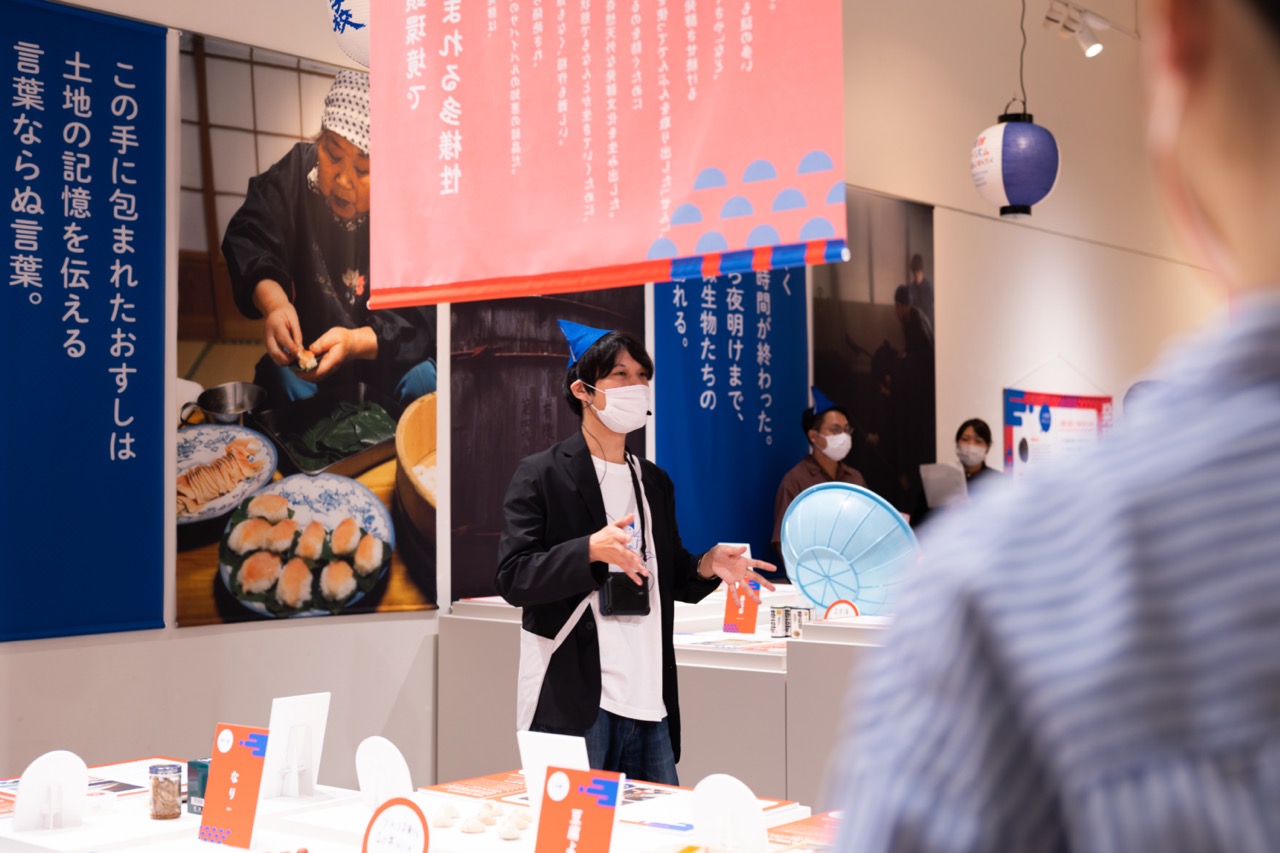

Mr. Ogura
Now, on behalf of everyone here today, I want to put a question to the head of research at Amano Enzyme. Dr. Koikeda, in a few words, what are enzymes?
Dr. Koikeda
That is a tough question to start (laughs). I would say that enzymes are “biological substances made up mainly of proteins that have a catalytic action.”
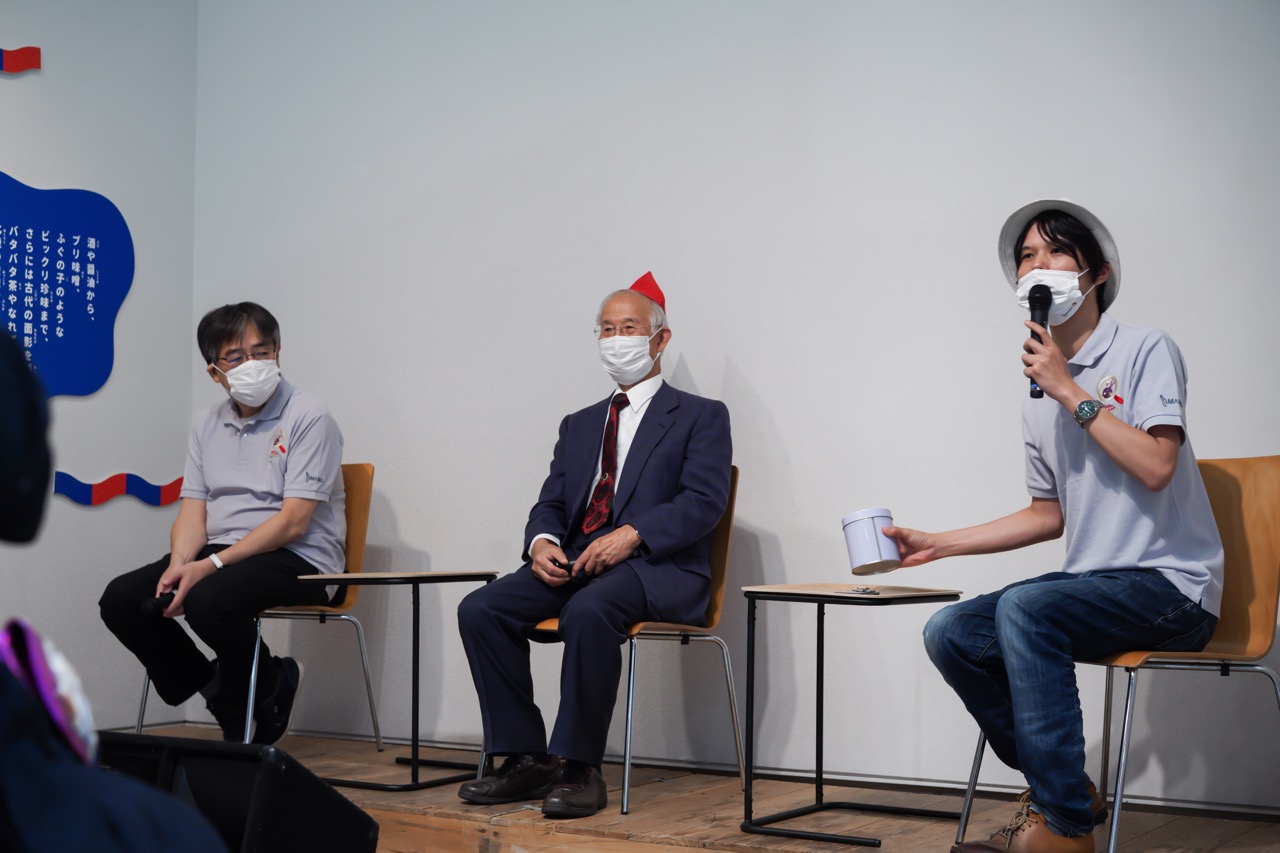

Mr. Ogura
So, put simply, it is a special kind of protein? Is that right?
Dr. Koikeda
Yes. Proteins are made of amino acids that are basically not much different to the amino acids that make up enzymes. The only real difference is in the combinations of amino acids.
The important point is that enzymes do not break down into nutrients like proteins. So, what do they do? They are substances that assist certain chemical reactions by making use of their “special amino acid structure.” That is, they function as catalysts in catalytic reactions.
Mr. Ogura
What do you mean by special structure?
Dr. Koikeda
Enzymes work by catching certain substances to change their structure or break them down. But to catch a substance, an enzyme needs to have a structure that matches the structure of that substance.
After catching a substance, the enzyme acts on it. In the case of decomposition, for example, an enzyme first catches a substance and then breaks specific location down.
Mr. Ogura
I see. Enzymes catch a substance, cut off some part of it, dismantle it, etc. What else do they do?
Dr. Koikeda
Synthesis. In the same way, they catch a substance, but this time they bring along a different substance to the location of capture and attach it there. Or perhaps they catch two different substances and connect them to create a reaction.


Mr. Ogura
So, when enzymes capture substances using their structure, they might break off a part of a substance in some cases and attach another substance in other cases. These are exactly opposite.
Dr. Koikeda
Right! In either case, the enzyme must first catch the target substance. For this, the shape of the enzyme is important. This is a key feature of enzymes.
Mr. Ogura
I would now like to introduce our special guest, Professor Shimizu.
Prof. Shimizu
I used to teach fermentation at Kyoto University many years ago. So far, we have talked about enzymes, but now I would like to talk about yeast.
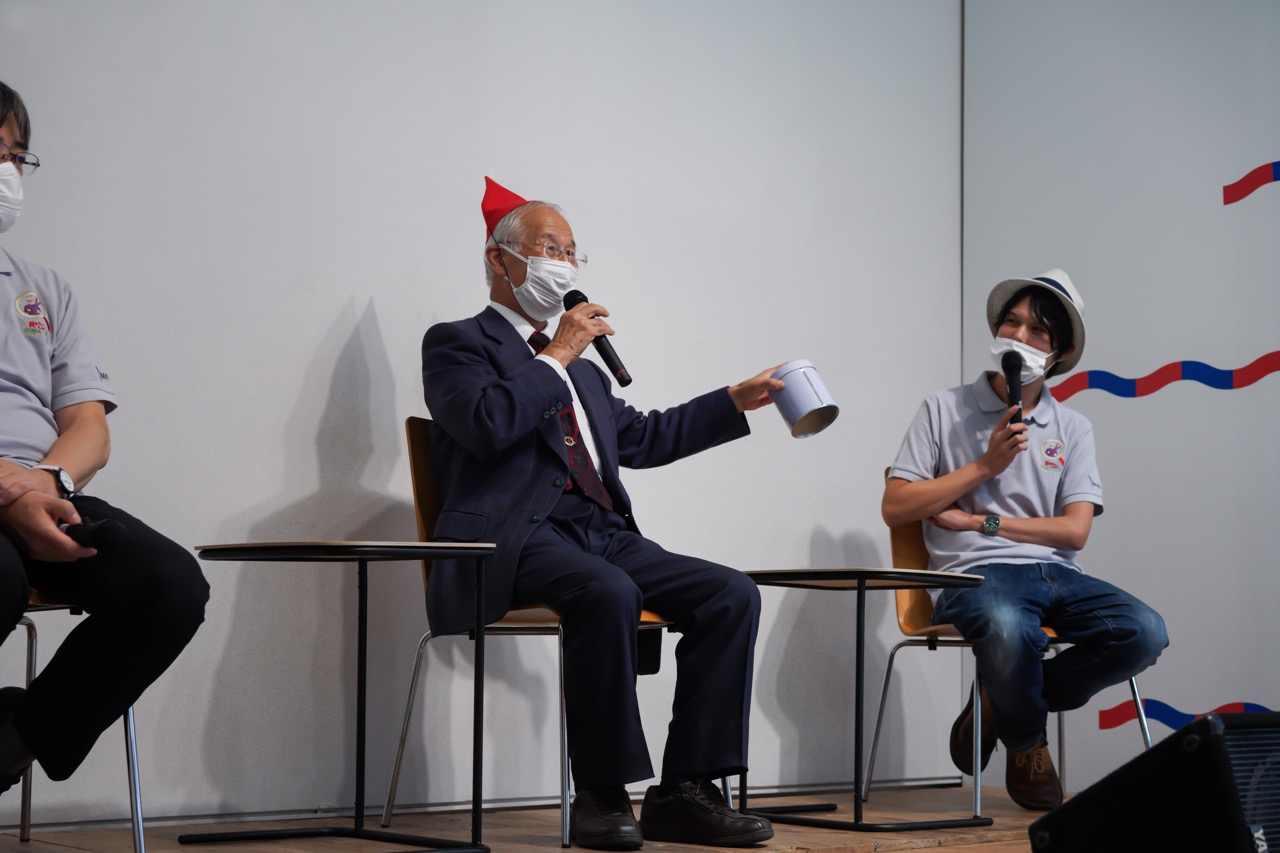

Mr. Ogura
On the request of Prof. Shimizu, we brought some wine here.
Prof. Shimizu
Now, this wine is made from grapes, isn’t it? When yeast is added to the sugar in the grapes, alcohol is produced. That is wine. However, the sugar in the grapes does notinstantly change into alcohol. There are several stages in this process. It looks like the yeast causes the change, but it is the enzymes in the yeast that really carry out each of the changes that lead to the formation of alcohol.
It was interesting to watch the workshop that was just held. There were all kinds of observations, like, “they’re glowing” and “they’re not glowing,” or “they’re getting sweeter” and “they’re not getting sweeter.”
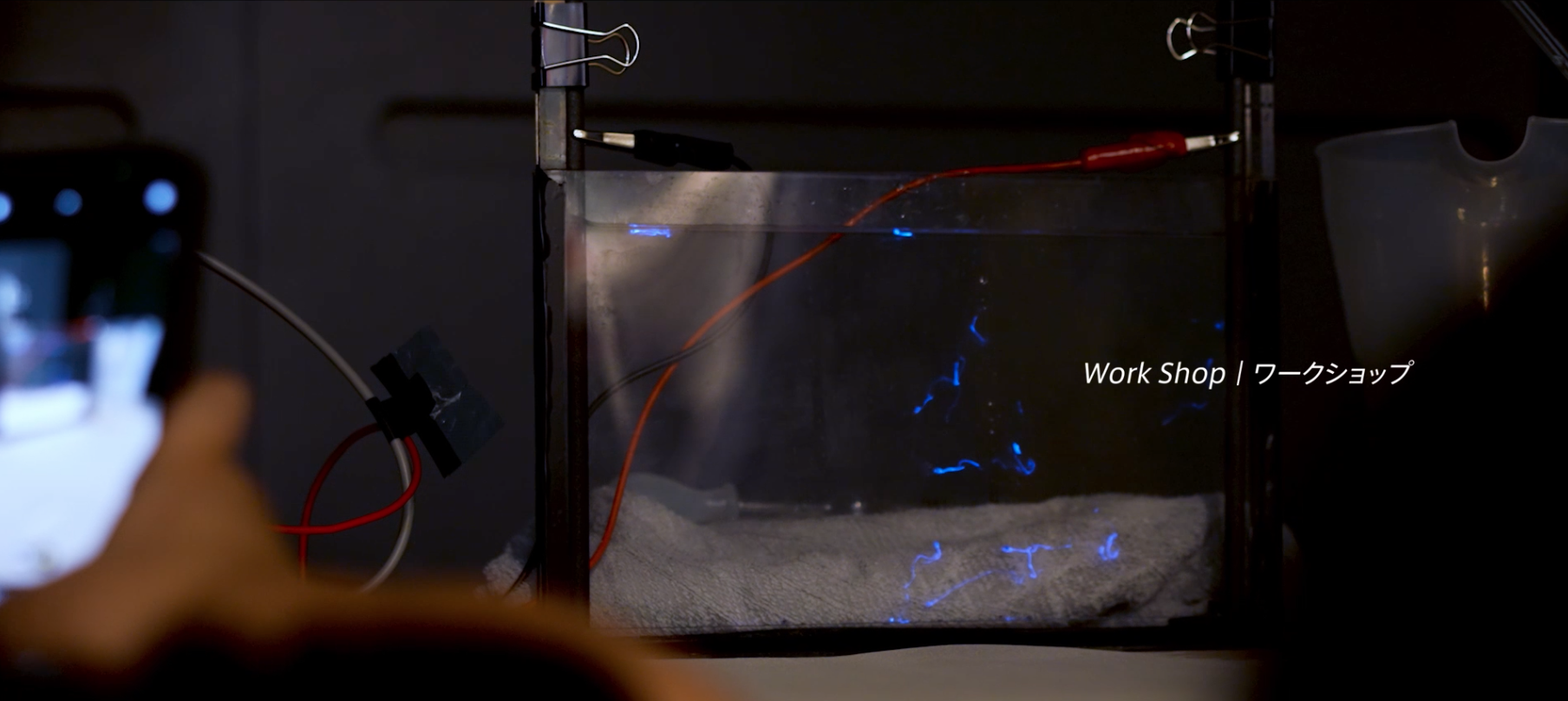

Prof. Shimizu
In the case of wine, sweet sugar is converted into intoxicating alcohol. So, I would like everyone to become familiar with the world of fermentation, just as you did in the workshop.
Mr. Ogura
Sweet grape juice changes into wine that makes you drunk when you drink it. What do the enzymes in the yeast do to the grape juice?
Prof. Shimizu
The sweet taste of grapes comes from glucose, which has a structure that fits very closely with enzymes. Like the successive passing of batons in a relay race, the enzymes change the structure of the sugar little by little, making it easier for the next enzyme to work effectively. Then when the next enzyme acts, the shape of the glucose changes again to make it easier for the following enzyme to work. Finally, as a result of a long reaction of many steps, alcohol, which has a completely different structure to the original sugar, is formed.
Mr. Ogura
There is not just one type of enzyme. When the enzyme has structure A, a different enzyme that fits perfectly with structure A emerges, creating structure B. Then another enzyme that fits with structure B emerges, which becomes structure C, and so on. This process is repeated many times.
Prof. Shimizu
Yes, that is it. You can imagine these enzymes all lined up and waiting in the cells of yeast, ready to start pushing a series of reactions at any moment.
Mr. Ogura
Hey Dr. Koikeda! I find this amazing! Why is it that a microorganism like yeast has so many different enzymes ready and waiting to change the structure of various substances?
Dr. Koikeda
You would have to ask the yeast about that (laughs). One transformation is not enough. What is important is that the whole process generates enough (net) energy for the yeast to survive, and to serve as material for producing more yeast. Over its long history, yeast must have somehow learned and acquired a mechanism to ensure this.
Mr. Ogura
Essentially, enzymes are created by living organisms, right? So, how does the use of enzymes benefit living organisms?
Dr. Koikeda
Firstly, what enzymes do is a kind of chemical reaction. If you try to perform a chemical reaction in the normal way, it often requires very high temperatures, or very high pressures.
Mr. Ogura
You mean for burning or crushing substances.
Dr. Koikeda
Yes! Burning and decomposing ultimately generate energy, but it is necessary to apply extreme heat or pressure otherwise you cannot initiate the reactions. This is not possible in the human body or in living organisms, so enzymes arose as an attempt to activate such reactions in a more gentle, gradual way.
Mr. Ogura
So, enzymes appeared in living organisms as substances capable of initiating reactions without the great bursts of energy that come from physical motion of the earth, like an exploding volcano or tremendous earthquake?
Dr. Koikeda
Yes, that is what I think.
Mr. Ogura
While there are a variety of fermented foods on display at this exhibition, I would like to talk about some examples of other kinds of products. There are many familiar things that we would be surprised to learn, which are produced “thanks to enzymes.”
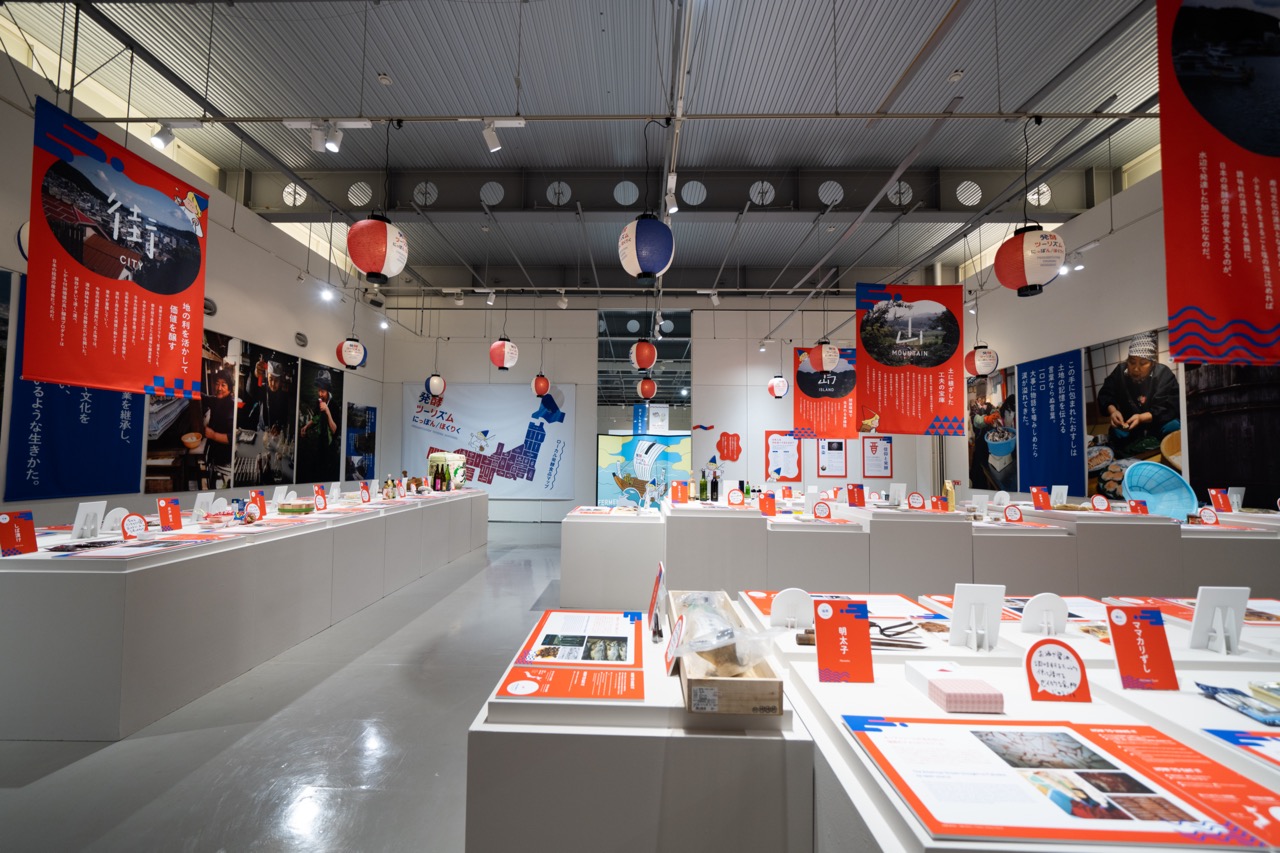

Mr. Ogura
Now, Dr. Koikeda and Prof. Shimizu. Could each of you please tell us about one product made with the help of enzymes that most people do not know about?
Dr. Koikeda
In the autumn, more and more fallen leaves pile up on the ground. Before you know it, they decompose and disappear, turning into black soil . This also happens by the action of enzymes. The work is not done by just one type of enzyme. A series of enzymes work in sequence to break down the leaves, little by little.
On the other hand, some kinds of plant waste do not turn into soil. Instead, they turn into coal over hundreds of millions of years due to the action of different enzymes.
Mr. Ogura
So, even coal is made with enzymes?
Dr. Koikeda
The production of coal requires not just enzymes, but enzymes played an important part of the production of coal.
Mr. Ogura
I see! How about you, Prof. Shimizu?
Prof. Shimizu
Quite a few people here today are wearing them. I’m talking about jeans. Blue jeans vary in color between dark blue and light blue. They are dyed with a dye known as “indigo blue.”
Indigo (ai) dyeing produces a dark blue color, but in the past people used to rub it with pumice stones to lighten the color. More recently, however, an enzyme that breaks down the color is used. When this enzyme is dissolved in water and used to wash dyed cloth, the color fades.
Mr. Ogura
So, jeans that look vintage from the beginning, despite never being worn, are made using enzymes?
Prof. Shimizu
Fading is done using enzymes, but it can also be done using other kinds of treatments. Now, what happens if you wash a red dress and a white shirt together?
ー
(Voice from audience)
“The white shirt will become colored!”
Prof. Shimizu
Right! The red color transfers to the white.
ー
(Voice from audience)
“The white turns pink!”
Prof. Shimizu
Correct (laughs). But what if you add an enzyme that breaks down that color? Even if there is some color transfer…
Mr. Ogura
Oh! I get it! It is a washing agent that prevents color migration.
Prof. Shimizu
A variety of convenient products for daily life like this are created through the action of enzymes. And enzymes are even used in much larger scale processes. For example, enzymes are responsible for producing a useful substance called acrylamide.
Acrylamide has a variety of uses. For example, it is mixed into paper as a brightener. It is also used as a coagulant when excavating undersea tunnels, when holes need to be solidified to enable excavation.
Mr. Ogura
Does this mean that enzymes are useful for tunnel construction?
Prof. Shimizu
Yes! The enzyme used for this was discovered in Japan. Acrylonitrile, a compound derived from petrochemicals, is transformed into acrylamide in a simple one-step enzyme reaction. About a million tons of acrylamide are produced worldwide every year.
Mr. Ogura
The substance I’m holding in my hand right now is called diastase.*1 Its commercial name is Takadiastase®. This was the very first product containing an enzyme extracted in its pure form that was used as a pharmaceutical product.
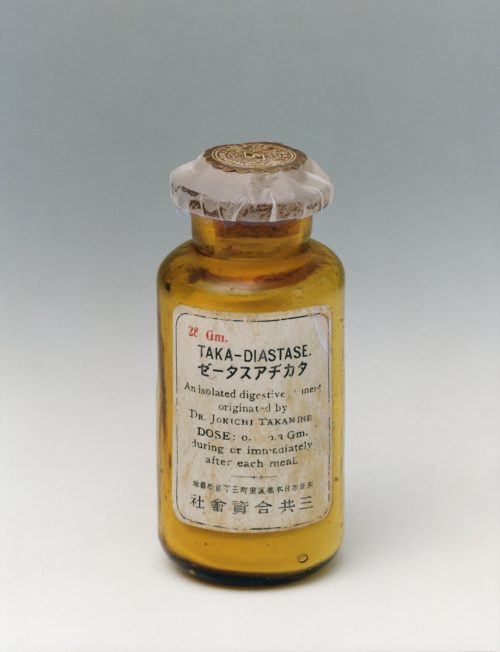

The name was coined by the French chemists A. Payen and J. Persoz in 1833 when they first extracted this starch-degrading enzyme from malt. This is where the custom of adding “-ase” to the end of enzyme names began. Diastase is also called amylase.
Mr. Ogura
Prof. Shimizu, how long ago was diastase created?
Prof. Shimizu
It has been over a hundred years.
Mr. Ogura
It is an extremely long-selling product, which is still used all over the world. And like the enzyme used in making acrylamide, mentioned earlier, diastase was created by a Japanese.
Japan has always had many kinds of fermentation industries, but just as the country was transitioning from the Edo to Meiji period, this traditional know-how was utilized to create a new enzyme industry.
The last of the 23 exhibits of this exhibition showcasing the culture of fermentation is a section titled “Jokichi Takamine and the Bio Industry.” As I talk about Dr. Jokichi Takamine, you will come to see how much we have benefited from the enzyme industry.
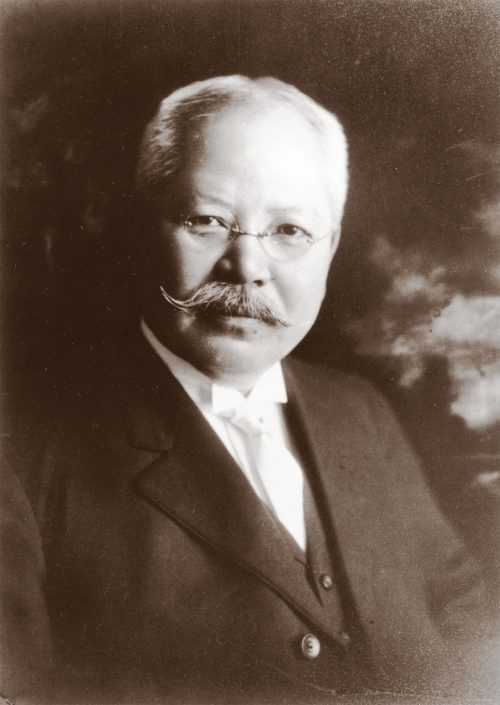

A chemist and industrialist born in 1854 in Takaoka, Toyama Prefecture. He earned doctorates in engineering and pharmacology. At the age of 36, he went to live in the U.S., becoming a successful businessman. He established Japan’s first chemical fertilizer manufacturing company (Tokyo Artificial Fertilizer Company) and was one of the founders of RIKEN (Institute of Physical and Chemical Research). He was also the inaugural president of Sankyo Co., Ltd. (one of two companies that eventually became the pharmaceutical company Daiichi Sankyo Co., Ltd).
Mr. Ogura
Dr. Takamine was born in the late Edo period. His father was a doctor; his mother was the daughter of a sake brewing family. At an early age, he traveled to Europe to study the latest development in chemistry, focusing on organic chemistry. He was a researcher, industrialist, and amazing individual who was instrumental in establishing various kinds of infrastructure in Japan. Using the brewing industry knowledge he absorbed through his family roots, he ventured to the U.S. to realize his ambition of industrializing the production of various enzymes.
What exactly is diastase? Could you please explain Dr. Koikeda?
Dr. Koikeda
Diastase is an enzyme that is still widely used as a digestive aid. Everyone eats rice and other starchy foods. You know that when you eat too much, you tend to feel lethargic. Taking diastase at this time helps your body to quickly break down the starch and promotes smooth digestion in your stomach and intestines.
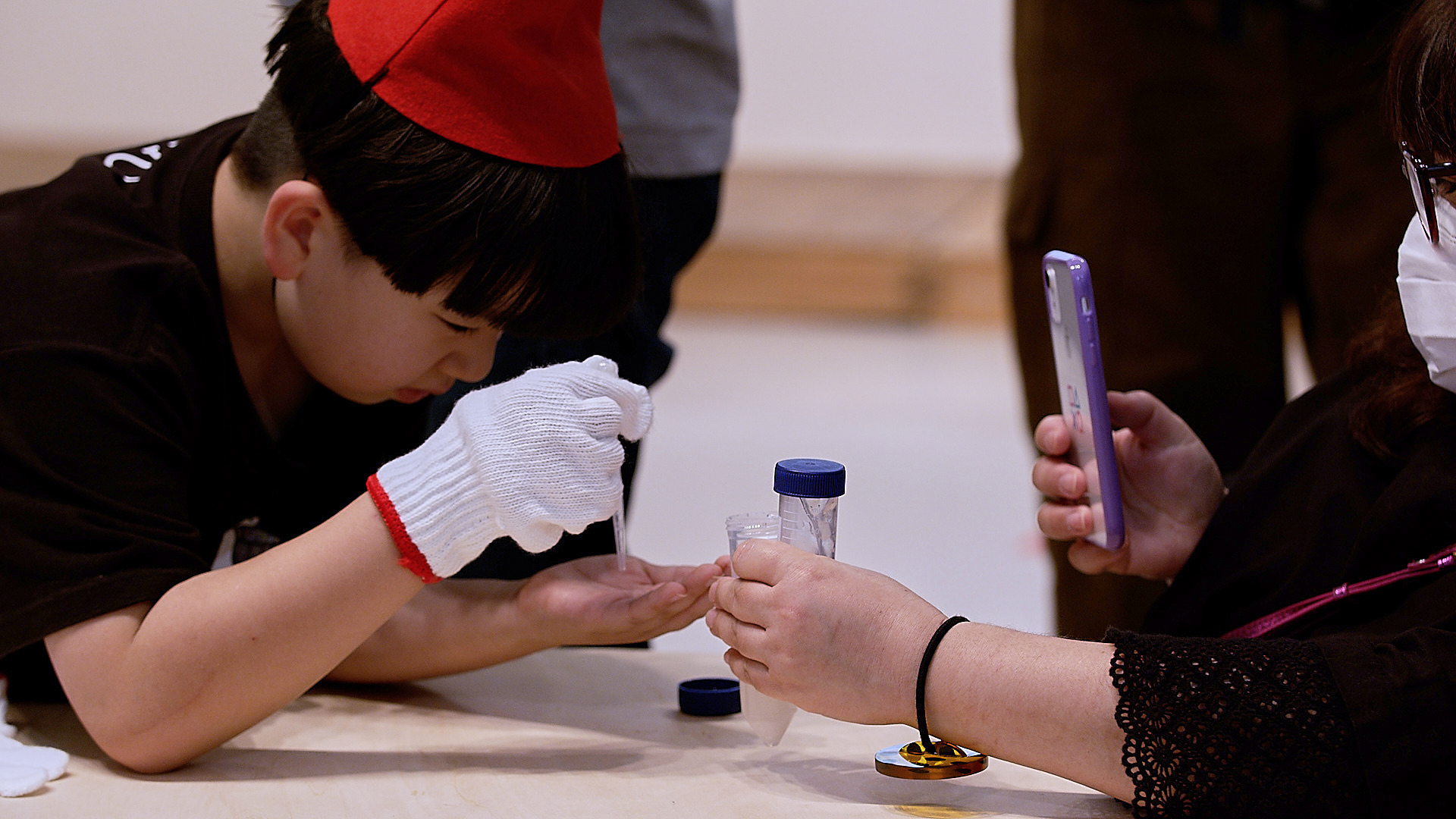

Mr. Ogura
How was diastase first commercialized?
Dr. Koikeda
The process of Japanese sake production starts by using the enzyme amylase, made from koji mold, to convert rice starch into sugar. The sugar is then consumed by yeast and converted into alcohol in a two-step process.
Now consider how whiskey, a typical American distilled liquor, is made. The raw materials are barley, corn, and malt, which is made by sprouting wheat. Despite the difference between brewed and distilled liquors, Dr. Takamine thought that it should be possible to make whiskey using traditional Japanese brewing method, based on koji. Thanks to this intuition, he invented a new way of making whiskey.
Mr. Ogura
If American whiskey was made the same way as Japanese sake, it could be produced more efficiently, he guessed. So that was the idea that Dr. Takamine started out with.
Dr. Koikeda
Yes! For this process, he created an “enzyme agent” to accelerate the saccharification reaction. Then it suddenly occurred to him that this same process could be used to improve digestion and absorption and make people healthier. That was how he came up with the idea.
Prof. Shimizu
Takadiastase® is a medicine that was created more than 100 years ago, but Dr. Takamine’s other great achievement was the discovery of adrenaline, which is also still used all over the world.
Only one other drug has been around for 100 years and is still used by everyone. Can you guess what it is?
Mr. Ogura
Is it penicillin?
Prof. Shimizu
No, penicillin was discovered not long before World War II (1928).
Mr. Ogura
I see. It has been around for less than 100 years.
Prof. Shimizu
The answer is aspirin. It is a famous antipyretic analgesic (for limiting fever and pain) made by the German chemical company Bayer. I think Dr. Takamine’s invention rivals that of aspirin.


The history of the enzyme industry goes back more than a century. In Part 2, we will trace the footprints of Dr. Jokichi Takamine and his pioneering efforts to link the organic world of living organisms with the inorganic world of chemistry. We also cover his attitude to learning from nature and touch on specific episodes of his R&D on hit products. Some of the unique questions asked in the Q&A session include “What is your favorite enzyme?” and “What is your favorite food made using enzymes?”
→ Continue to Part 2Enzymes are active in every aspect of our world, and we are seeking new possibilities for them.
In this corner, we visit people who are currently active in various fields with "Enzo" and ask them about their stories.

